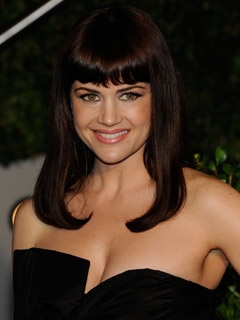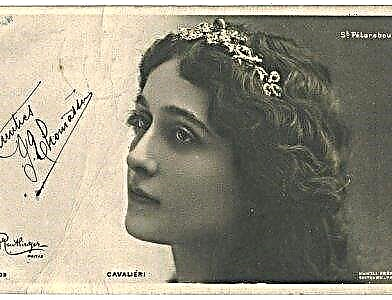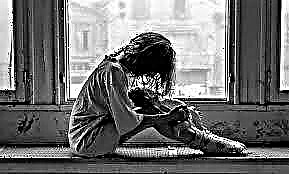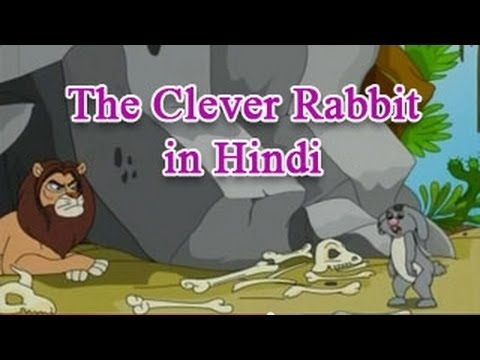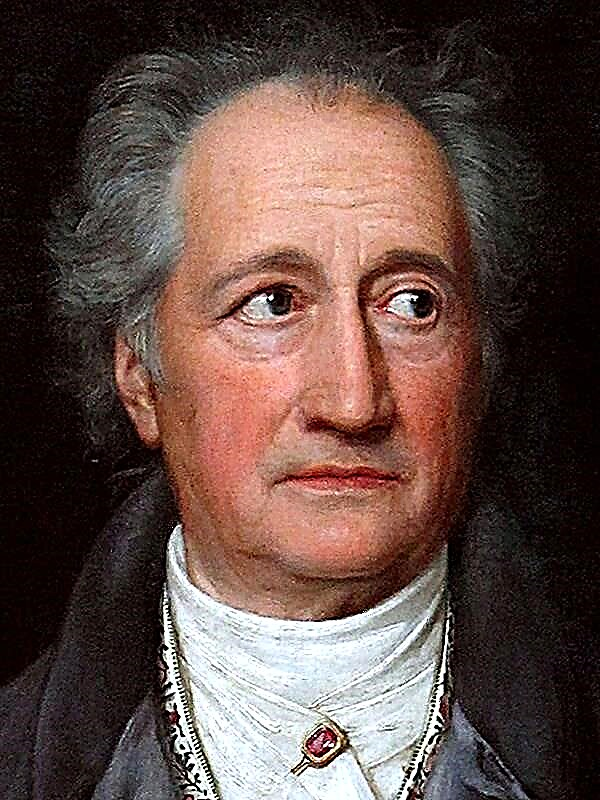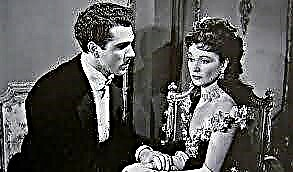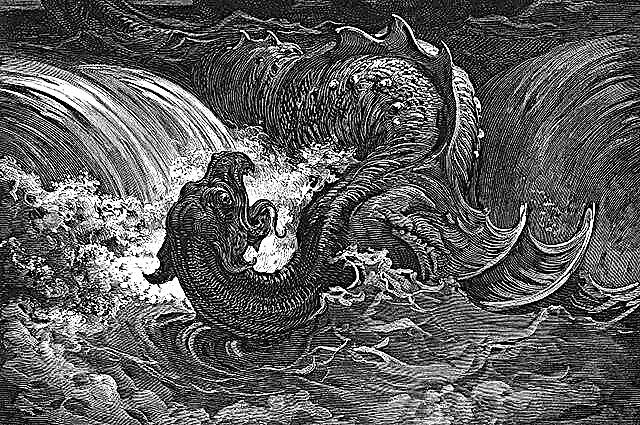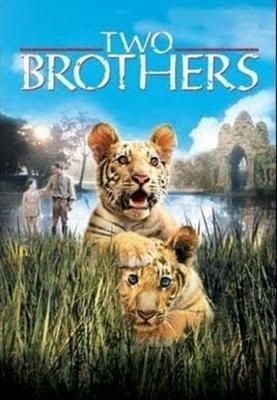Often in literature lessons the question is: "How relevant is this work today?" The genres and forms of literature are changing to varying degrees, but human nature remains unchanged. The laws of human society remain unshakable: the troubles and joys of peoples are the same at all times. N. Railway’s poem by N. Nekrasov not only tells of a revolutionary breakthrough in the state’s transport system, but also of the reverse side - thousands of ruined lives, workers, on whose bones the whole world progress is worth.
History of creation
There is a legend that when designing the St. Petersburg-Moscow railway, Nicholas I drew a straight line on the map without going around swamps, swamps, ravines. The construction was extremely difficult, and workers had to work in constant cold, hunger, suffering diseases and poverty:
We were torn under the heat, in the cold,
With forever bent back
Lived in dugouts, fought hunger,
Frozen and wet, sick with scurvy.
Simple serf peasants built the road, who not so long ago received freedom after the abolition of serfdom, but did not know what to do with this will. Since the Russian Empire was still considered a backward agrarian country, the construction of the railway acquired fundamental strategic importance. It was to become a large-scale leap to production and technological progress. Russia would become an even more serious player on the world stage. And thousands of peasants, working tirelessly in difficult conditions, died there, on the construction of the railway, which was designed to become a symbol of greatness and development of the state. This silent, forgotten feat of simple laborers is devoted to the poem of Nekrasov "Railway" in 1864.
Genre, direction and size
Many literary scholars are inclined to believe that the “Railway” is a poem combining drama, satire and even a ballad. In its form, this is a conversation of fellow travelers (the general and his son Vanya) with the lyrical hero himself.
Nekrasov chose the four-footed dactyl and cross rhyme as the size to create an atmosphere of narration, a gradual but intense conversation. This sounding technique can even be compared with the sound of wheels on the railway - a peculiar sound recording creates this indescribable ballad atmosphere.
Composition
It is important to note that the poem is easily divided into 3 semantic parts.
- The first is a description by Nekrasov of nature, the beauty of his native land. The poet confesses his sincere love for the Russian land, and this creates a strong and spectacular contrast for the following parts.
- The second part is the most epic, here Nekrasov writes how the dead peasants awaken to sing about their difficult share. The poet tells the true story of the construction of the road with all the troubles of slave labor.
- In the third part, the son of Vanya informs his father of a strange dream in which he dreamed this story. The general laughs and answers that the people are a gathering of drunks, and truly beautiful and important things in the world are created by individual persons - geniuses, not people, and after that encourages the lyrical hero not to intimidate his son, but to tell the truth. The poet agrees and speaks of the end of construction, when a barrel of wine was rolled for the peasants and the "debts" that came from nowhere were forgiven. The people were again deceived, but the railway was built, and the chiefs will now celebrate.
Images and Symbols
In the "Railway" Nekrasov creates several very bright and expertly designed images. The first of these is Russia and the Russian people. The poet calls the peasants God's warriors, peaceful children of labor, brothers, admiring the simplicity and strength of their characters.
The tortured Belarusian became a vivid image, which became a symbol of everyone and everyone who was soiled by slave labor:
Bloodless lips, eyelids falling
Skinny sores
Eternally standing in the water knee-deep
The legs are swollen; tangle in the hair.
Another vivid image is the general with whom the lyrical hero is talking. Not much has been said about him, but several bright details make it possible to recreate the portrait of the proud man with ease. For example, a coat on a red lining immediately reveals a general in him, and arrogant words about the worthlessness of the people (and of any country and nationality) also paint him as a presumptuous, proud, pompous man. The general enumerates the world wonders of architecture, obviously knowing a lot about them, but at the same time does not understand to whom he owes both a position and a coat on a red lining. At the same time, he dressed Vanya’s son in a coachman’s armor to emphasize his proximity to the people. Thanks to these three details, the poet masterly painted for the readers a portrait of a typical "boss" from any field.
The image of a lyrical hero is a collective image of a real citizen who is aware of his duty to the people. He, not afraid of the wrath of the general, speaks the truth, which pierces the eyes of the masters. This is a conscious, conscientious and fair person who insists on fair criticism of every initiative. Yes, the road is certainly important, but not at that price.
Themes and Issues
Nekrasov seeks emotional empathy of the reader with the help of vivid contrasts and contrasts, on which the poem is built. Amazing Russian landscapes give way to scary paintings:
Right path: the embankments are narrow,
Columns, rails, bridges.
And on the sides, all the bones are Russian ...
How many of them! Vanya, do you know?
Just as quickly, the poet takes the reader away from the hardships of construction to a lonely, unfortunate Belarusian, from him to a pompous general, and again to the tired faces of the peasants. Constantly creating contrasting situations, Nekrasov creates a tense atmosphere that completely absorbs attention.
The role of the themes raised in the poem is important here. In addition to the fate of the peasantry, first tortured by the yoke of serfdom, and then left without help, Nekrasov draws attention to the fate of Russia. Here are two prominent representatives of the country: the general, who talks about aesthetics and pretends to be patriotism, and the people themselves, who will never see this imaginary care and symbolism in Vanya’s attire. How can we talk about the progress and entry into the world of industrial powers, when those for whom the state machine should seem to work, are killed in thousands by slave labor?
The author also raises the problem of indifference of gentlemen to the fate of ordinary people. The general considers the people a bunch of drunks, which is not worthy of his attention and regret. For this, a man was created to work to death, he knows nothing more. But this hero does not even understand that he lives at the expense of all these people. If not for them, he could not have provided for himself. The money that generously held military ranks was taken from the treasury, and who fills it? Not the king and not his retinue, but the working people who produce what is for sale. Therefore, we can highlight another problem - social injustice, because of which hundreds of people are forced to provide one such general who does not hit finger by finger all his life, since the rank went to him by inheritance.
Main idea
The whole tragedy of the era and the meaning of the poem Nekrasov squeezed to 4 lines, which play the role of an epigraph:
Vanya (in the coachman armory):
“Dad! who built this road? ”
Dad (in a coat on a red lining):
"Count Peter Andreevich Kleinmichel, darling!".
Count Kleinmichel and the whole bureaucratic world, which received laurels, recognition and considerable reward, did not build a road. These rails lie on the bones of peasants tormented by hunger, disease, injustice and poverty. The poet proves this idea satirically depicted in the epigraph in his poem, and the more universal the human problem appears: the simple people who build, fight, plow at the cost of their lives will never receive well-deserved gratitude. Never in any country in the world. The general impudently asks a question to the lyrical hero:
I was recently in the walls of the Vatican,
I wandered around the Coliseum for two nights,
I saw St. Stephen in Vienna
Well ... did all this people create?
Yes people. But the descendants will only have the name of the architect and the king, and those who create beauty, who feed, are lucky, protect their countries, the descendants will not remember. This is a great human tragedy not only of Russia, but of the whole world. This is the main idea of the work.
Means of artistic expression
To achieve such a large-scale and expressive picture of the life and work of the peasant people, Nekrasov succeeds with the help of a system of artistic means.
- Firstly, these are vivid epithets in the description of nature: glorious autumn, vigorous air, icy river;
- Secondly, metaphors and comparisons: “The ice is immature on the river as icy as if it were melting sugar”, “Pit the chest”;
- Here is the inversion (a habit of noble labor);
- Alliteration (leaves fade ... did not have time);
- Assonance (everywhere I recognize my beloved Russia).

